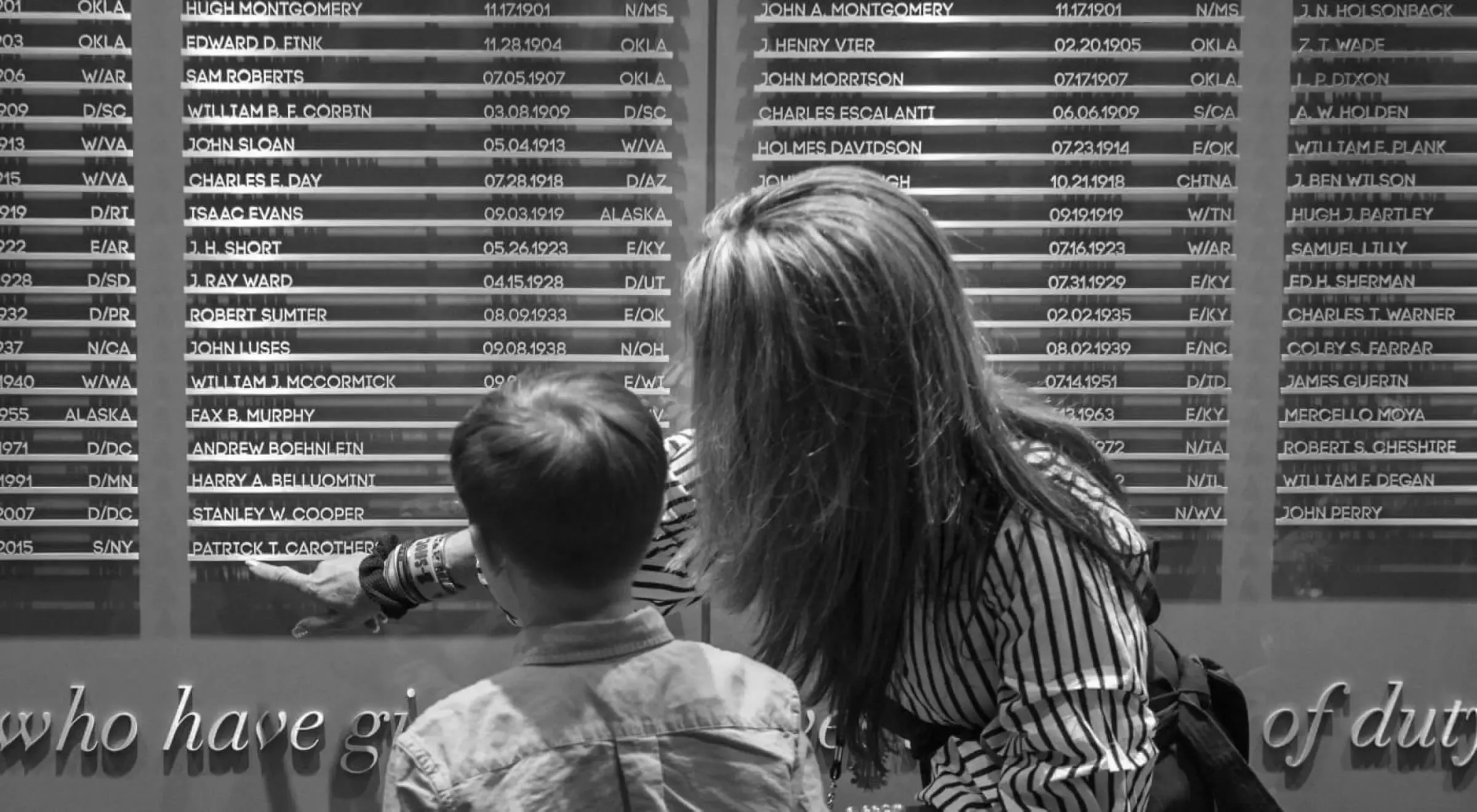
Line of Duty Deaths Prevalent in Old West
In the vast history of American law enforcement, the U.S. Marshals have been involved in some of the deadliest episodes on record in which felonious actions resulted in multiple officer casualties. And while none of these can rival the most costly incident ever - the September 11, 2001, terrorist attack on New York City's World Trade Center in which 60 officers were killed - four of the top 22 incidents involved deaths of deputy marshals.
Ambushed
On April 15, 1872, eight deputy marshals were shot and killed In what came to be known as the Going Snake Massacre, which occurred in Tahlequah, Indian Territory. [A tract of the Indian Territory that is now the state of Oklahoma became known as the Oklahoma Territory in 1889. Oklahoma statehood began in 1907.]
Throughout the American frontier in the late 1800's, U.S. marshals and their deputies served as authorities between the native Indian population and white settlers who were moving westward. The marshals generally enjoyed peaceful relations with the Indians, but this was not the case that long-ago April day.
The trouble in this one particular instance started when a Cherokee Indian named Proctor shot a white American man named Kecterson in the head, seriously wounding him. Proctor then turned his gun to Kecterson's wife -- who was a Cherokee - and killed her.
At that time, Indian courts handled affairs amongst Indians while American courts did the same for white settlers on the frontier. But Kecterson was worried that Proctor would be acquitted in Cherokee court and he still wanted justice to be served. He turned to the local American government. As a result, the U.S. commissioner issued an arrest warrant to the Marshals Office on condition the Cherokee court failed to convict Proctor.
Deputy Marshals Jacob Owens and Joseph Peavy organized a posse of 10 men. The trial was strategically moved to the local Cherokee schoolhouse, which sat above a prairie clearing -- affording the Indians a safe location from which to strike.
The two lawmen and their temporarily deputized companions rode their horses into the clearing in front of the schoolhouse and then dismounted. Their intention was to take seats in the rear of the makeshift courtroom and await a verdict.
It is unclear if their weapons were drawn as they approached the building, but as they walked closer, several Cherokees exited the front door and immediately began firing.
The members of the posse had no place to hide. They fired back as they retreated to their horses, killing three Indians and wounding six others as they went, but they were soon overwhelmed.
Seven possemen were killed on the spot; Deputy Owens died several hours later.
"It was the worst slaughter of marshals in history," wrote former agency historian Ted Calhoun in his book "The Lawmen."
The Cherokee jury acquitted Proctor the following day.
Dangerous duty
The above account depicted the most costly encounter for deputies and specially deputized posse members. But there have been others throughout the agency's history.
Among them:
- On May I , 1885, Deputy Marshal Jim Guy, along with possemen Bill Kirksey, Andy Roff and James Roff, were killed in Delaware Bend. Indian Territory, in a shoot-out with the Pink-Lee Gang;
- In Eufaula. Indian Territory, Deputy Marshal William Kelly and possemen Mark Kuykendall and Henry Smith were shot and killed during a prisoner escape Jan. 17, 1887; And in Ingalls.
- Oklahoma Territory, a shoot-out with the famed Doolin-Dalton Gang on Sept. 1, 1893, left Deputy Marshals Ham Hueston and Lafe Shadley. as well as posse member Dick Speed, dead.

